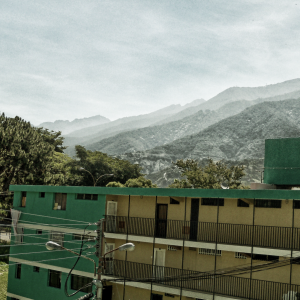This week, Circle of Blue reports on the connections between severe weather, climate change, and the movement of people.
After a year of extreme weather, people in the drylands of northern California and the hurricane-drenched bayous of southern Louisiana are brooding on the same question: should they leave? New global research suggests that one of these two “water shock” scenarios is more likely to result in migration. World Bank researchers found that people are five times as likely to move following drought conditions as they are after floods or periods of excess water.
The finding is part of a report on water and migration released last week during World Water Week, an annual conference. The report details the nuanced relationship between changes in water availability and the movement of people.
The World Bank’s Esha Zaveri is the lead author on the report. She said “Water has the power to shape these migration patterns, perhaps more than you think.” People have always settled near rivers, lakes, oases, and coasts. It makes sense, she said, that without water, people will feel compelled to leave.
These stay-or-go decisions are not merely the concern of rich-world Californians and Louisianans. Climate change is making rainfall more variable across the planet. In the Mediterranean, southern Africa, the southwestern United States and Mexico, droughts are already more severe than they were six decades ago. If society continues to burn fossil fuels and to clear forests, those dry cycles are expected to intensify and spread across wetter areas like the Caribbean and Amazon, potentially affecting hundreds of millions of people a year. At the same time, diversions for agriculture, industry, or fast-growing cities can exacerbate local water stress.
It is tempting to focus on climate change as the sole reason for the mass movement of Central Americans northward into Mexico or the exodus of Yemenis. The report, however, urges restraint when it comes to attributing causes. Conditions vary widely across countries and regions and the roots of migration are political and social as well as environmental. The distinction between a climate migrant and a migrant is often quite blurry. As Zaveri put it “This really cautions against making any sweeping conclusions.”
Even so, the researchers sought to answer three questions related to water shocks: Why do people migrate? Who migrates? Where do they migrate to? To answer these questions, the researchers created a database to show the in-country movements of hundreds of millions of people in 150 countries over three decades. To that trove they added data on precipitation patterns, urban drinking water sources, and demographics.
People move because they feel their lives will improve and they have the means to do so. Usually migration occurs within a country and not across international borders. The greatest environmental pressures fall on people in rural areas who rely on farming for their livelihood. After a few failed harvests, migration can seem like an escape to a better life.
But that option is not available to everyone. Rainfall affects income, but income also influences migration. Zaveri noted that, in low-income countries, most people in a drought-stricken region do not migrate, either because they do not want to or they cannot afford to. More often than not it is the poorest who remain, stuck in a place with diminished economic prospects. Said Zaveri, “These populations who are left behind are often omitted from media headlines, yet they represent a policy concern that is just as serious.”
The researchers found that flooding was not as likely to induce migration as drought, for various reasons. Communities may be more capable of adapting to periodic inundation. Or, flooding raises the hopes that fields will have better harvests in the future.
The answer to the third question — where people migrate to — is more straightforward. Cities are often the destination. But life that awaits them there may not match the skills they have. Drought typically displace farmers, whose training and skills are a poor match for the urban jobs market. The study found that when farmers move to cities, they face not only lower wages, but also less access to housing and basic social services.
The report says that to stem migration, rural areas could be fortified. Smoothing peaks and troughs in rainfall by building water storage is a form of insurance, as is irrigation. Restoring forests and preserving wetlands can buffer an ecosystem in dry times. Another option, Zaveri said, are safety net programs like crop insurance or food aid. To ease the transition for those who move to urban areas, there could be investments in education, infrastructure, and services.
The options are not without drawbacks, however. Water storage can lure people to ecologically risky areas, and upsetting an already tenuous resource balance can ignite conflict. And even cities are not immune to water shortages. Migrants fleeing rural drought might trade one bad situation for another.
The challenge, Zaveri said, is to recognize the complexity of human migration and acknowledge that the futures of both city and countryside are bound by the ebb and flow of people, always in search of water.
And that’s “What’s Up With Water,” from Circle of Blue, where water speaks. More water news and analysis await you at
circleofblue.org. This is Eileen Wray-McCann – thanks for being here.






